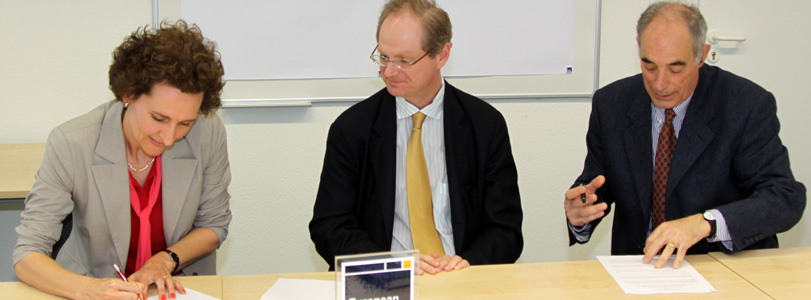European XFEL and Berkeley Lab start cooperation
Research institutions cooperate in the areas of development and use of free-electron lasers
Paul Alivisatos, director of Berkeley Lab, said: “This collaboration offers exciting opportunities. European XFEL is the most advanced X-ray free-electron laser project with a high repetition rate. We share common scientific goals and both sides can benefit from a close cooperation, especially when it comes to equipment that takes years to develop.”
Massimo Altarelli, Managing Director of European XFEL, added, that European XFEL is looking forward to this joint effort: “Berkeley Lab is one of the world’s most renowned laboratories. The collaboration will allow us to join forces to meet some of the challenges we face in building the European XFEL, for instance in the development of detectors, X-ray optics and beam transport systems.”
Berkeley Lab is a U.S. Department of Energy (DOE) National Laboratory conducting a wide variety of scientific research. Among others, it operates the Advanced Light Source (ALS), a third-generation synchrotron, and is pursuing studies for a soft X-ray free-electron laser (FEL) based on a superconducting accelerator. With a repetition rate of 100 000 to a million flashes per second, scientists at such an FEL would be able to examine and observe fast processes such as chemical reactions, but at a longer wavelength, in a range complementary to the European XFEL.
